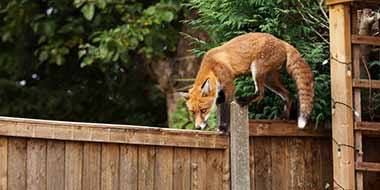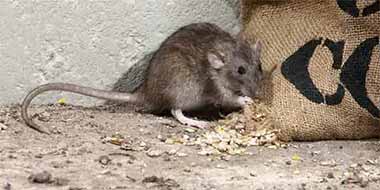One of the joys of keeping chickens is to see them wandering around the garden going about their chicken business (or destroying your annual bedding depending on your point of view!), and there is nothing more satisfying than watching a group of stately Orpingtons sailing across your lawn like a determined armada.
They become pets, companions, a source of amusement and a provider of food for our tables, so naturally you want to look after them.
 It makes sense then to provide protection for your chickens. You should be aware that by law you must provide your poultry with security from predators and danger; meaning you should not let your birds roam all day to annoy your neighbours and cause traffic chaos, while at night (and during the day) you need to make sure that the fox cannot get to them; remember too that if your pets cause damage to a third-party then you will be liable!
It makes sense then to provide protection for your chickens. You should be aware that by law you must provide your poultry with security from predators and danger; meaning you should not let your birds roam all day to annoy your neighbours and cause traffic chaos, while at night (and during the day) you need to make sure that the fox cannot get to them; remember too that if your pets cause damage to a third-party then you will be liable!
While fencing is the preferred method of containment and will normally provide a satisfactory level of protection, unless it is six-foot high with an angled top and buried to a depth of at least two feet, a determined fox is still going to be able to get into the enclosure.
The solution? Well more and more people are using an electric fence to surround their chickens which, contrary to popular belief, is neither cruel nor dangerous as it provides a short, sharp, harmless shock to the inquisitive nose of the intruder which will both deter predators and keep your chickens where you want them. Options include electrified netting, single strand (usually of cord type) and multi strand (usually triple).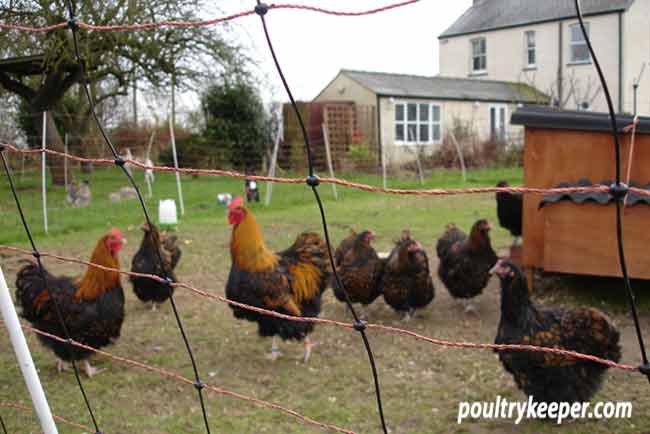
Electric poultry netting protects these Gold Laced Orpingtons from foxes.
Do not be concerned that children, cats and other household pets will be harmed, as like the fox they get a shock which keeps them away, otherwise there is no injury. Do keep an eye out for hedgehogs however if you are using electric netting as they will curl into a ball once shocked and invariably curl around the wire. If this is a recurrent problem then you should consider the alternative of running a triple wire around a fenced enclosure, which would be high enough to allow hedgehogs to crawl under while at the same time stopping foxes.
Which setup is best?
If you want to be more certain of security, then an electric fence is definitely the best all round choice for your chickens. The setup can be as complicated or as simple as you wish, and can consist of either single wires or netting, and you will know from your situation which is best.
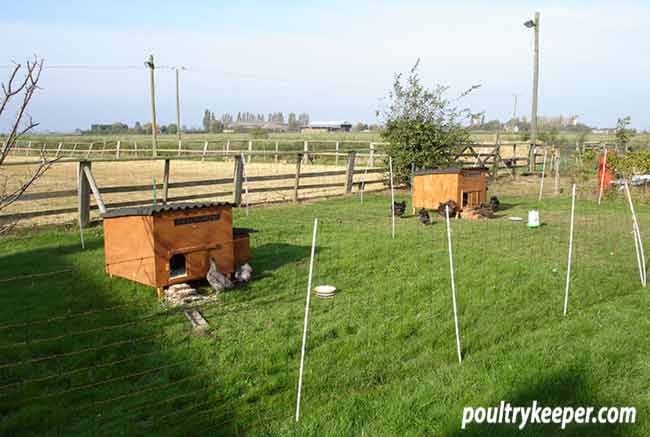
Nets tend to be the easier option and normally come as kits, whereas the wire strand option tends to need more setup on your part and usually relies on the existence of an internal solid fence. There are many internet based suppliers when it comes to solutions in these respects.
When deciding on your setup consider:
- The size of the area you want to enclose
- Whether it is a permanent area
- Whether you wish to rotate grass
- How close your setup will be to public areas
- The number of chickens you have
- How inconspicuous you want it
- Ease of entry
- How exposed the area is
- Access to mains power
- Cost
- Ease of setup
- The age/size of your chickens
- Ease of maintenance
- What you need to keep out/in
- Whether you have a permanent fence
How does it work?
Power is supplied either from a battery or a mains outlet, and if the latter then you will need to consult a qualified electrician for the installation. As an electric fence (as opposed to electric netting) is normally designed to keep larger livestock within a boundary it is usually of the wire strand type and it will not keep foxes out, so you will need additional precautions such as an internal wire fence. If you use electrified poultry netting then this is normally sufficient.
Most keepers (and indeed poultry farmers) go for the electrified netting option and a basic set up will consist of a net, an energiser, a battery and an earth stake.
The net itself which surrounds your chickens, house and all, will consist of a net of electrified nylon and comes in a variety of lengths to suit your situation. This is ideal to keep larger breeds and hybrids from wandering as well as keeping unwanted visitors out, plus it is moveable should you need to relocate your birds.
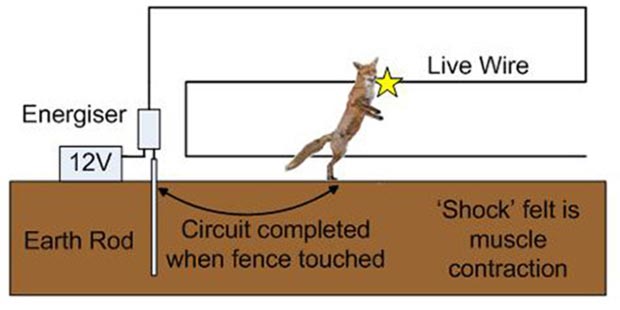 A wire woven into the nylon of the netting passes a small current through the fox to ground, completing the circuit. This causes muscles to contract causing an unpleasant sensation.
A wire woven into the nylon of the netting passes a small current through the fox to ground, completing the circuit. This causes muscles to contract causing an unpleasant sensation.
The bottom strand is likely to be plastic to prevent shorting, and successive strands of twisted wire get further apart. You can get closer spaced netting to contain smaller growers, and there are several colour options available. Nets come in different heights and lengths, so the options for the home enthusiast are endless!
Once in place the energiser, which converts the battery or mains power (depending on your setup) to a brief high voltage pulse of electricity, is connected to the net with one cable and to the earth stake with another and also to the battery with the two terminal cables.
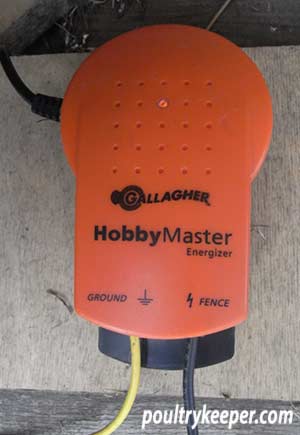
If you are using a battery, then a leisure battery suitable for caravans is the best option as it is designed to be constantly on as opposed to a car battery which is just used to start the engine.
The final part of the circuit is supplied by the animal itself when it comes into contact with the net where it grounds the pulse through its feet and the shock is felt due to contraction of the muscles rather than the electricity itself.
Depending on the energiser settings, you may be able to increase the frequency of the pulse for training the birds to respect the net, which means that as soon as they touch the electrified wires with their heads, the current is grounded through their feet and the shock results.
As animals are well insulated by fur and feathers a higher voltage is needed in order to give an effective shock. The spark that is produced on contact will cross the air space over the animal’s insulation ensuring contact and the necessary muscle contraction; if the electrical impulse did not spark across this air space to the animal’s skin then the fox would feel nothing!
It may be distressing for you at first, and certainly the chickens get a shock from the power, but they usually only touch it once and then keep their distance from the unpleasant experience.
It is advisable when you first turn on your netting to be in attendance as a frightened bird may run forward, trapping herself in the wires, in which case you will need to turn off the energiser and release her.
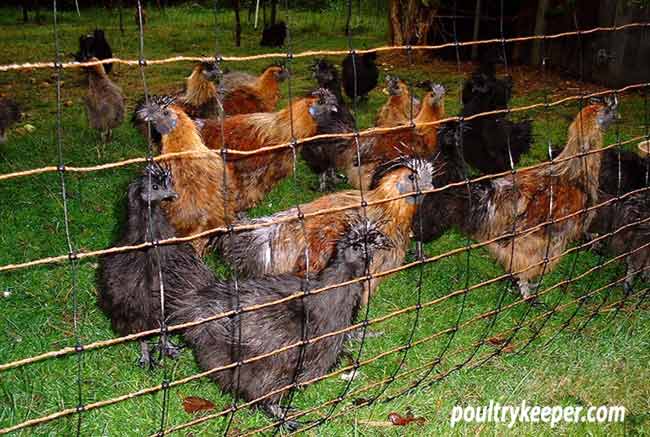
A really determined bird will run straight through the netting in her bid to escape the electric shock so again you will need to be on hand to catch her and a large landing net used for fishing is ideal to catch escapees as the birds do not judge the extended reach too well and can be caught with a deft swipe and then released back into the run. A great advantage of this is that the chicken is less stressed than if you were to chase her around for ages in a bid to trap her.
Like anything else where chickens are concerned, the upset to their normal routine (i.e. confinement and a shock) is likely to upset their laying and you may also find an increase in sniffles as the birds will be stressed and their resistance to illness reduces. This is normal and the birds will soon return to normal habits.
Tips for setup:
- A length of rope is useful to mark out your proposed placing before starting.
- Lay the net out before trying to place it as it is a cumbersome thing to manoeuvre.
- Mow, or if you have time (7-21 days depending on brand) apply a weed-killer to a 12 in wide strip where the net will sit – weeds etc will cause rapid power drainage and reduce the effectiveness of the net.
- Velcro tie wraps are ideal to secure the two ends of the net to make a gateway that is easily secured and opened.
- If the soil is dry, wet the ground before inserting the earth stake to provide better contact.
- When erecting, two people are best to hold either end to tighten the net while a third inserts the stakes.
- Invest in a circuit checker to ensure your fence is always at maximum power.
- If you must, a blade of grass held between the thumb and forefinger and touched against the net will give you a (gentle) indication that the fence is working.
- Read all of the manufacturer’s installation precautions.
- If the fence can be touched by visitors to your property, ensure the correct warning signs are on display.
- Check the net daily for breaks – rabbits will chew through the strands if the power is off.
The triple line:
This option allows an existing fence to be protected, especially if it is less than six feet high or of a weaker construction. Although often referred to as triple, some keepers will have more lines depending on its usage; three would be a minimum.
To set up a triple line, simply set proprietary electric fencing stakes about 5 feet apart and run the electric line around the perimeter three times, spacing the top strand at a height where a fox cannot avoid touching it (about 18-20 ins) and the bottom strand where it will not contact grass yet not allow an animal bigger than a hedgehog to pass under (about 4-6 ins). Place the middle strand about 6 ins above the bottom one. 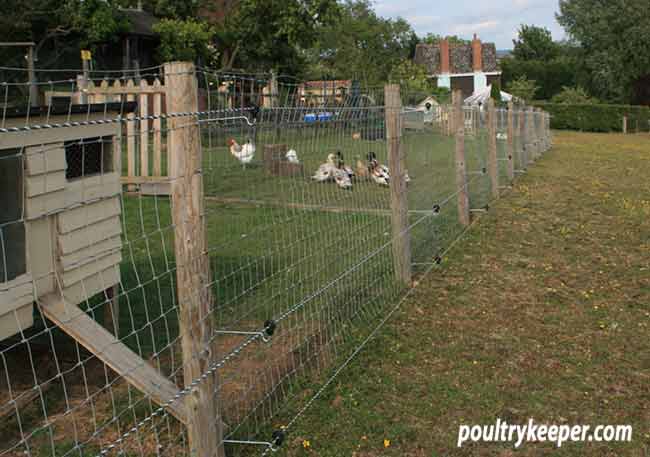
3 Strands of electic rope used to protect a fence.
The line needs to be about 12 ins away from the fence being protected, and you will need to ensure that the three lines are connected to ensure a current through them all.
Single strand setups are normally of a thicker wire which is run through a series of eyelets, offset against the top of your normal fencing and are more often used on higher fences, where the electrification prevents a fox from using the top of the fence to scramble over.
Enjoy your secure chickens!
[callout width=”100%” title=”Haynes Chicken Manual by Laurence Beeken.” style=”green”]
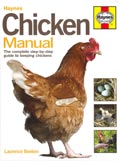 Laurence has written a complete and easy-to-understand reference book, containing no-nonsense advice, tips & facts, as well as plenty of relevant photographs and diagrams.
Laurence has written a complete and easy-to-understand reference book, containing no-nonsense advice, tips & facts, as well as plenty of relevant photographs and diagrams.
“I can highly recommend this book and wouldn’t be without it on my book shelf…” Tim Daniels.
Click here or on the image to view it on Amazon.[/callout]




